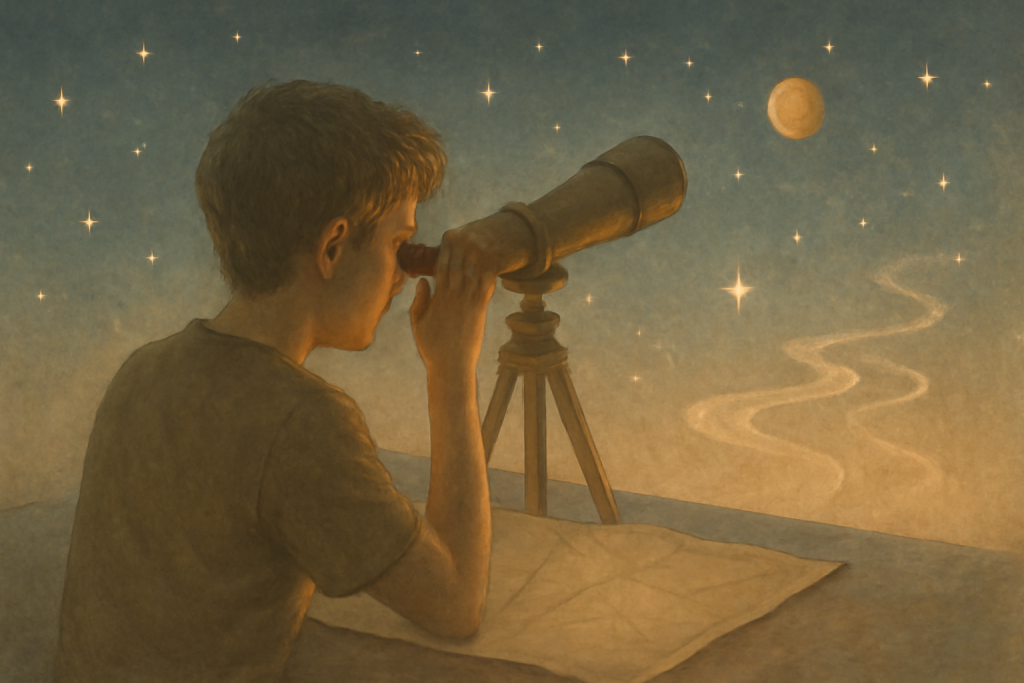In a world brimming with information, constant change, and endless opportunities, curiosity plays a central role in shaping how we explore new ideas and discoveries. Curiosity is not just an innate quality; it is a force that drives long-term exploration, guiding us toward new challenges and realms of knowledge. From space exploration to personal development, curiosity propels our desire to ask questions, solve problems, and engage with the world in new and innovative ways.
Curiosity feeds long-term exploration, helping individuals and organizations stay engaged, adaptable, and forward-thinking. But what is it about curiosity that makes it so crucial for sustainable exploration? And how can we cultivate this essential trait to fuel our own intellectual and creative journeys? In this article, we’ll delve into the current trends and emerging research around curiosity’s role in long-term exploration, from scientific advancements to personal growth.

The Link Between Curiosity and Long-Term Exploration
1. Curiosity as the Catalyst for Discovery
Curiosity is the driving force behind exploration. It sparks the desire to understand the unknown and pushes us to seek out new experiences, information, and solutions. Whether in science, technology, or daily life, curiosity leads to questions, and questions lead to exploration. As we ask more questions, our understanding deepens, and new avenues for discovery emerge.
- Scientific Exploration: In the field of science, curiosity has led to groundbreaking discoveries. Take space exploration, for example. The curiosity about what lies beyond our planet has driven missions to Mars, the moon, and distant galaxies. Each discovery opens the door to further exploration, showing how curiosity creates a cycle of inquiry and discovery that leads to sustained exploration.
- Technology and Innovation: In the tech industry, curiosity fosters innovation. It’s not just about improving existing products; curiosity encourages the exploration of what’s possible, even beyond what we can currently imagine. From artificial intelligence to biotechnology, curiosity fuels the constant evolution of new technologies that have far-reaching implications for the future.
Key Insight: Curiosity is the catalyst for discovery, driving continuous exploration and leading to deeper knowledge and groundbreaking innovations.
2. The Role of Curiosity in Lifelong Learning
Curiosity is closely tied to lifelong learning, which is essential for long-term exploration. Lifelong learning goes beyond formal education and focuses on the continuous acquisition of knowledge, skills, and experiences throughout one’s life. The more curious we are, the more likely we are to seek out new learning opportunities, whether through reading, hands-on experience, or collaboration with others.
- Curiosity in Personal Growth: People who are curious tend to be lifelong learners. They actively seek out opportunities to grow and develop, whether through hobbies, professional development, or travel. This drive for continuous learning enables them to adapt to changes, solve complex problems, and expand their horizons.
- In the Workplace: In today’s fast-paced business environment, curiosity is a key trait for staying relevant. Employees who are curious actively pursue new knowledge, skills, and ideas, which makes them more adaptable to changing roles and evolving industries. This curiosity enables professionals to innovate, collaborate, and thrive in an ever-changing landscape.
Key Insight: Curiosity feeds long-term exploration by encouraging lifelong learning. It drives the ongoing acquisition of knowledge and helps individuals adapt and grow.
How Curiosity Shapes Creativity and Problem-Solving
3. Fostering Creative Thinking Through Curiosity
Curiosity is the foundation of creativity. When we approach problems with curiosity, we seek out new perspectives and solutions, often leading to innovative ideas. Instead of simply following established patterns, curiosity encourages us to break free from the norm, explore unconventional methods, and experiment with new possibilities.
- Exploring New Solutions: For instance, the curiosity-driven approach in design thinking has led to innovative solutions in product development. Designers and engineers begin with a question or challenge, then explore multiple potential solutions through iterative testing and creative brainstorming. This process nurtures creativity and results in products that meet needs in new and exciting ways.
- Curiosity in the Arts: In the arts, curiosity drives exploration of new mediums, techniques, and forms of expression. Artists continually push boundaries by asking “what if?” and “why not?” Curiosity allows them to experiment with styles, materials, and subject matter, constantly evolving their creative practices.
Key Insight: Curiosity drives creativity by inspiring new ways of thinking and problem-solving, fostering innovation in various fields from product design to the arts.
4. Overcoming Challenges with a Curious Mindset
Curiosity is not just a tool for exploration; it’s also an essential mindset for overcoming obstacles and challenges. When faced with a difficult task or problem, a curious mindset helps us approach it with an open mind, looking for solutions and opportunities instead of becoming discouraged. This shift in perspective leads to better problem-solving and more effective strategies for overcoming adversity.
- Curiosity and Resilience: Individuals with a strong sense of curiosity are more resilient when facing setbacks. Instead of feeling defeated by failure, they view challenges as opportunities to learn and grow. This curiosity-driven resilience fosters a long-term commitment to exploration and progress, as individuals are motivated to keep seeking solutions despite obstacles.
- Curiosity in the Business World: In the business world, curiosity allows organizations to approach challenges from fresh angles. Leaders who encourage curiosity within their teams create environments where innovation thrives, and problems are tackled with creative, diverse approaches.
Key Insight: A curious mindset helps individuals and organizations overcome challenges by fostering resilience and adaptability in the face of adversity.
Curiosity and the Future of Innovation
5. How Curiosity Drives Future Technologies
In today’s rapidly advancing world, curiosity is the key driver of future technologies. As we look toward emerging technologies such as artificial intelligence, quantum computing, and renewable energy, curiosity about the unknown continues to fuel exploration and innovation.
- AI and Curiosity: In the realm of AI, researchers and developers are driven by curiosity about how machines can learn, reason, and interact with humans. This curiosity pushes the boundaries of what’s possible with AI, leading to advancements in machine learning, neural networks, and natural language processing.
- Exploring the Unknown: Similarly, in fields like space exploration, curiosity about what lies beyond Earth continues to inspire missions to Mars and the outer reaches of our solar system. Each step forward brings new discoveries and raises new questions, fueling future exploration and scientific inquiry.
Key Insight: Curiosity is the engine of future technologies, pushing innovation and progress in fields that are still in their infancy.
Cultivating Curiosity for Long-Term Exploration
6. How to Foster a Curious Mindset
While curiosity comes naturally to some, it’s also a trait that can be cultivated. Here are a few strategies to help nurture curiosity for long-term exploration:
- Ask Questions: Don’t be afraid to ask questions, whether they’re big or small. The more questions you ask, the more you’ll discover, and the more opportunities for learning and growth will emerge.
- Embrace New Experiences: Try new things, whether it’s picking up a new hobby, learning a new skill, or exploring unfamiliar areas of knowledge. Exposure to new experiences opens up new avenues for exploration.
- Stay Open-Minded: Cultivate an open-minded approach to challenges and unfamiliar ideas. Being open to diverse perspectives encourages deeper exploration and more creative problem-solving.
Key Insight: By actively cultivating curiosity through asking questions, seeking new experiences, and staying open-minded, individuals can sustain long-term exploration and discovery.
Conclusion
Curiosity feeds long-term exploration by continuously driving us to question, explore, and discover. Whether in the fields of science, technology, business, or personal development, curiosity serves as the foundation for progress and innovation. As we engage with the unknown and seek new answers, we contribute to a cycle of inquiry and discovery that leads to deeper understanding and transformative breakthroughs.
By nurturing curiosity, we equip ourselves with the tools needed for continuous growth, both intellectually and personally. Ultimately, curiosity is not just the spark of innovation; it is the fuel that sustains long-term exploration, propelling us toward a future full of possibilities.
Reference
- Curiosity Fuels Creativity Through Idea Linking, https://www.sciencedirect.com
- Curiosity Enhances Learning, Motivation & Academic Performance, https://www.degruyterbrill.com
- Curiosity Can Be Trained Through Metacognitive Practice, https://arxiv.org









